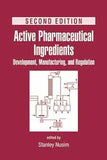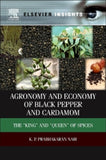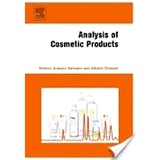Chemistry of Peptide Synthesis By N. Leo Benoiton
Book Description
Chemistry of Peptide Synthesis is a complete overview of how peptides are synthesized and what techniques are likely to generate the most desirable reactions. Incorporating elements from the author’s role of Career Investigator of the Medical Research Council of Canada and his extensive teaching career, the book emphasizes learning rather than memorization. The text uses clear language and schematics to present concepts progressively, carefully excluding unnecessary details and providing a historical context in which to appreciate the development of the field.
The author first outlines the fundamentals of peptide synthesis, focusing on the intermediates in aminolysis reactions. Gradually the text builds into discussions of the applicability of coupling reactions, stereomutation, methods of deprotection, solid-phase synthesis, side-chain protection and side reactions, and amplification on coupling methods. The book clarifies the differences between oxazolones from amino-acid derivatives and segments and the implications of their formation on the chiral integrity of products. The author offers a critical analysis of the mechanisms of coupling reactions and the desirability of preactivation. The text explains hindrance and the nucleophilicity of tertiary amines and rationalizes their use. The book also explores mechanisms of acidolysis and the dual role of nucleophiles as reactants and scavengers.
Chemistry of Peptide Synthesis supplies a broad, yet straightforward approach that appeals to those with limited knowledge of organic chemistry or chemists from other fields as well as in-depth coverage that can be appreciated by experienced peptidologists.
Table of Contents
FUNDAMENTALS OF PEPTIDE SYNTHESIS
Chemical and Stereochemical Nature of Amino Acids
Ionic Nature of Amino Acids
Charged Groups in Peptides at Neutral pH
Side-Chain Effects in Other Amino Acids
General Approach to Protection and Amide-Bond Formation
N-Acyl and Urethane-Forming N-Substituents
Amide-Bond Formation and the Side Reaction of Oxazolone Formation
Oxazolone Formation and Nomenclature
Coupling, 2-Alkyl-5(4H)-Oxazolone Formation and Generation of Diastereoisomers from Activated Peptides
Coupling of N-Alkoxycarbonylamino Acids without Generation of
Diastereoisomers: Chirally Stable 2-Alkoxy-5(4H)-Oxazolones
Effects of the Nature of the Substituents on the Amino and Carboxyl Groups of the Residues that are Coupled to Produce a Peptide
Introduction to Carbodiimides and Substituted Ureas
Carbodiimide-Mediated Reactions of N-Alkoxycarbonylamino Acids
Carbodiimide-Mediated Reactions of N-Acylamino Acids and Peptides
Preformed Symmetrical Anhydrides of N-Alkoxycarbonylamino Acids
Purified Symmetrical Anhydrides of N-Alkoxycarbonylamino Acids
Obtained Using a Soluble Carbodiimide
Purified 2-Alkyl-5(4H)-Oxazolones from N-Acylamino and N-Protected Glycylamino Acids
2-Alkoxy-5(4H)-Oxazolones as Intermediates in Reactions of
N-Alkoxycarbonylamino Acids
Revision of the Central Tenet of Peptide Synthesis
Strategies for the Synthesis of Enantiomerically Pure Peptides
Abbreviated Designations of Substituted Amino Acids and Peptides
Literature on Peptide Synthesis
METHODS FOR THE FORMATION OF PEPTIDE BONDS
Coupling Reagents and Methods and Activated Forms
Peptide-Bond Formation from Carbodiimide-Mediated Reactions of N-Alkoxycarbonylamino Acids
Factors Affecting the Course of Events in Carbodiimide-Mediated Reactions of N-Alkoxycarbonylamino Acids
Intermediates and Their Fate in Carbodiimide-Mediated Reactions of N-Alkoxycarbonylamino Acids
Peptide-Bond Formation from Preformed Symmetrical Anhydrides of N-Alkoxycarbonylamino Acids
Peptide-Bond Formation from Mixed Anhydrides of N-Alkoxycarbonylamino Acids
Alkyl Chloroformates and Their Nomenclature
Purified Mixed Anhydrides of N-Alkoxycarbonylamino Acids and Their Decomposition to 2-Alkoxy-5(4H)-Oxazolones
Peptide-Bond Formation from Activated Esters of N-Alkoxycarbonylamino Acids
Anchimeric Assistance in the Aminolysis of Activated Esters
On the Role of Additives as Auxiliary Nucleophiles: Generation of Activated Esters
1-Hydroxybenzotriazole as an Additive that Suppresses N-Acylurea Formation by Protonation of the O-Acylisourea
Peptide-Bond Formation from Azides of N-Alkoxycarbonylamino Acids
Peptide-Bond Formation from Chlorides of N-Alkoxycarbonylamino Acids: N-9-Fluorenylmethoxycarbonylamino-Acid Chlorides
Peptide-Bond Formation from 1-Ethoxycarbonyl-2-Ethoxy-1,2-Dihydroquinoline–Mediated Reactions of N-Alkoxycarbonylamino Acids
Coupling Reagents Composed of an Additive Linked to a Charged Atom Bearing Dialkylamino Substituents and a Nonnucleophilic Counter-Ion
Peptide-Bond Formation from Benzotriazol-1-yl-Oxy-tris(Dimethylamino)Phosphonium Hexafluorophosphate–Mediated Reactions of N-Alkoxycarbonylamino Acids
Peptide-Bond Formation from O-Benzotriazol-1-yl-N,N,N’,N’ TetramethyluroniumHexafluorophosphate– and Tetrafluoroborate-Mediated Reactions of N-Alkoxycarbonylamino Acids
Pyrrolidino Instead of Dimethylamino Substituents for the Environmental Acceptability of Phosphonium and Carbenium Salt–Based Reagents
Intermediates and Their Fate in Benzotriazol-1-yl-Oxyphosphonium and Carbenium Salt–Mediated Reactions
1-Hydroxybenzotriazole as Additive in Couplings of N-Alkoxycarbonylamino Acids Effected by Phosphonium and Uronium Salt–Based Reagents
Some Tertiary Amines Used as Bases in Peptide Synthesis
The Applicability of Peptide-Bond Forming Reactions to the Coupling of N-Protected Peptides Is Dictated by the Requirement to Avoid Epimerization: 5(4H)-Oxazolones from Activated Peptides
Methods for Coupling N-Protected Peptides
On the Role of 1-Hydroxybenzotriazole as an Epimerization Suppressant in Carbodiimide-Mediated Reactions
More on Additives
An Aid to Deciphering the Constitution of Coupling Reagents from Their Abbreviations
PROTECTORS AND METHODS OF DEPROTECTION
The Nature and Properties Desired of Protected Amino Acids
Alcohols from which Protectors Derive and Their Abbreviated Designations
Deprotection by Reduction: Hydrogenolysis
Deprotection by Reduction: Metal-Mediated Reactions
Deprotection by Acidolysis: Benzyl-Based Protectors
Deprotection by Acidolysis:tert-Butyl-Based Protectors
Alkylation due to Carbenium Ion Formation during Acidolysis
Deprotection by Acid-Catalyzed Hydrolysis
Deprotection by Base-Catalyzed Hydrolysis
Deprotection by beta-Elimination
Deprotection by beta-Elimination: 9-Fluorenylmethyl-Based Protectors
Deprotection by Nucleophilic Substitution by Hydrazine or Alkyl Thiols
Deprotection by Palladium-Catalyzed Allyl Transfer
Protection of Amino Groups: Acylation and Dimer Formation
Protection of Amino Groups: Acylation without Dimer Formation
Protection of Amino Groups: tert-Butoxycarbonylation
Protection of Carboxyl Groups: Esterification
Protection of Carboxyl, Hydroxyl, and Sulfhydryl Groups by tert-Butylation and Alkylation
Protectors Sensitized or Stabilized to Acidolysis
Protecting Group Combinations
CHIRALITY IN PEPTIDE SYNTHESIS
Mechanisms of Stereomutation: Acid-Catalyzed Enolization
Mechanisms of Stereomutation: Base-Catalyzed Enolization
Enantiomerization and Its Avoidance during Couplings of N-Alkoxycarbonyl-L-Histidine
Mechanisms of Stereomutation: Base-Catalyzed Enolization of Oxazolones Formed from Activated Peptides
Mechanisms of Stereomutation: Base-Induced Enolization of Oxazolones Formed from Activated N-Alkoxycarbonylamino Acids
Stereomutation and Asymmetric Induction
Terminology for Designating Stereomutation
Evidence of Stereochemical Inhomogeneity in Synthesized Products
Tests Employed to Acquire Information on Stereomutation
Detection and Quantitation of Epimeric Peptides by NMR Spectroscopy
Detection and Quantitation of Epimeric Peptides by HPLC
External Factors that Exert an Influence on the Extent of Stereomutation During Coupling
Constitutional Factors that Define the Extent of Stereomutation During Coupling: Configurations of the Reacting Residues
Constitutional Factors that Define the Extent of Stereomutation During Coupling: The N-Substituent of the Activated Residue or the Penultimate Residue
Constitutional Factors that Define the Extent of Stereomutation During Coupling: The Aminolyzing Residue and its Carboxy Substituent
Constitutional Factors that Define the Extent of Stereomutation During Coupling: The Nature of the Activated Residue
Reactions of Activated Forms of N-Alkoxycarbonylamino Acids in the Presence of Tertiary Amine
Implications of Oxazolone Formation in the Couplings of N-Alkoxycarbonlyamino Acids in the Presence of Tertiary Amine
Enantiomerization in 4-Dimethylaminopyridine-Assisted Reactions of N-Alkoxycarbonylamino Acids
Enantiomerization During Reactions of Activated N-Alkoxycarbonylamino Acids with Amino Acid Anions
Possible Origins of Diastereomeric Impurities in Synthesized Peptides
Options for Minimizing Epimerization during the Coupling of Segments
Methods for Determining Enantiomeric Content
Determination of Enantiomers by Analysis of Diastereoisomers
Formed by Reaction with a Chiral Reagent
SOLID-PHASE SYNTHESIS
The Idea of Solid-Phase Synthesis
Solid-Phase Synthesis as Developed by Merrifield
Vessels and Equipment for Solid-Phase Synthesis
A Typical Protocol for Solid-Phase Synthesis
Features and Requirements for Solid-Phase Synthesis
Options and Considerations for Solid-Phase Synthesis
Polystyrene Resins and Solvation in Solid-Phase Synthesis
Polydimethylacrylamide Resin
Polyethyleneglycol-Polystyrene Graft Polymers
Terminology and Options for Anchoring the First Residue
Types of Target Peptides and Anchoring Linkages
Protecting Group Combinations for Solid-Phase Synthesis
Features of Synthesis Using Boc/Bzl Chemistry
Features of Synthesis Using Fmoc/tBu Chemistry
Coupling Reagents and Methods for Solid-Phase Synthesis
Merrifield Resin for Synthesis of Peptides Using Boc/Bzl Chemistry
Phenylacetamidomethyl Resin for Synthesis of Peptides Using Boc/Bzl Chemistry
Benzhydrylamine Resin for Synthesis of Peptide Amides Using Boc/Bzl Chemistry
Resins and Linkers for Synthesis of Peptides Using Fmoc/tBu Chemistry
Resins and Linkers for Synthesis of Peptide Amides Using Fmoc/tBu Chemistry
Resins and Linkers for Synthesis of Protected Peptide Acids and Amides
Esterification of Fmoc-Amino Acids to Hydroxymethyl Groups of Supports
2-Chlorotrityl Chloride Resin for Synthesis Using Fmoc/tBu Chemistry
Synthesis of Cyclic Peptides on Solid Supports
REACTIVITY, PROTECTION, AND SIDE REACTIONS
Protection Strategies and the Implications Thereof
Constitutional Factors Affecting the Reactivity of Functional Groups
Constitutional Factors Affecting the Stability of Protectors
The e-Amino Group of Lysine
The Hydroxyl Groups of Serine and Threonine
Acid-Induced O-Acylation of Side-Chain Hydroxyls and the O-to-N Acyl Shift
The Hydroxyl Group of Tyrosine
The Methylsulfanyl Group of Methionine
The Indole Group of Tryptophan
The Imidazole Group of Histidine
The Guanidino Group of Arginine
The Carboxyl Groups of Aspartic and Glutamic Acids
Imide Formation from Substituted Dicarboxylic Acid Residues
The Carboxamide Groups of Asparagine and Glutamine
Dehydration of Carboxamide Groups to Cyano Groups During Activation
Pyroglutamyl Formation from Glutamyl and Glutaminyl Residues
The Sulfhydryl Group of Cysteine and the Synthesis of Peptides Containing Cystine
Disulfide Interchange and Its Avoidance during the Synthesis of Peptides Containing Cystine
Piperazine-2,5-Dione Formation from Esters of Dipeptides
N-Alkylation during Palladium-Catalyzed Hydrogenolytic Deprotection and Its Synthetic Application
Catalytic Transfer Hydrogenation and the Hydrogenolytic Deprotection of Sulfur-Containing Peptides
Mechanisms of Acidolysis and the Role of Nucleophiles
Minimization of Side Reactions during Acidolysis
Trifunctional Amino Acids with Two Different Protectors
VENTILATION OF ACTIVATED FORMS AND COUPLING METHODS
Notes on Carbodiimides and Their Use
Cupric Ion as an Additive that Eliminates Epimerization in Carbodiimide-Mediated Reactions
Mixed Anhydrides: Properties and Their Use
Secondary Reactions of Mixed Anhydrides: Urethane Formation
Decomposition of Mixed Anhydrides: 2-Alkoxy-5(4H)-Oxazolone Formation and Disproportionation
Activated Esters: Reactivity
Preparation of Activated Esters using Carbodiimides and Associated Secondary Reactions
Other Methods for the Preparation of Activated Esters of N-Alkoxycarbonylamino Acids
Activated Esters: Properties and Specific Uses
Methods for the Preparation of Activated Esters of Protected Peptides, Including Alkyl Thioesters
Synthesis using N-9-Fluorenylmethoxycarbonylamino Acid Chlorides
Synthesis using N-Alkoxycarbonylamino-Acid Fluorides
Amino-Acid N-Carboxyanhydrides: Preparation and Aminolysis
N-Alkoxycarbonylamino-Acid N-Carboxyanhydrides
Decomposition during the Activation of Boc-Amino Acids and Consequent Dimerization
Acyl Azides and the Use of Protected Hydrazides
O-Acyl and N-Acyl N’-Oxide Forms of 1-Hydroxybenzotriazole Adducts and the Uronium and Guanidinium Forms of Coupling Reagents
Phosphonium and Uronium/Aminium/Guanidinium Salt–Based Reagents: Properties and Their Use
Newer Coupling Reagents
To Preactivate or not to Preactivate: Should That Be the Question?
Aminolysis of Succinimido Esters by Unprotected Amino Acids or Peptides
Unusual Phenomena Relating to Couplings of Proline
Enantiomerization of the Penultimate Residue During Coupling of an Nµ-Protected Peptide
Double Insertion in Reactions of Glycine Derivatives: Rearrangement of Symmetrical Anhydrides to Peptide-Bond-Substituted Dipeptides
Synthesis of Peptides by Chemoselective Ligation
Detection and Quantitation of Activated Forms
MISCELLANEOUS
Enantiomerization of Activated N-Alkoxycarbonylamino Acids and Esterified Cysteine Residues in the Presence of BaseAPPENDICES
Useful Reviews
Year, Location and Chairmen of the Major Symposia
On the "Primary Sequence" of Peptides and Proteins
Index


















